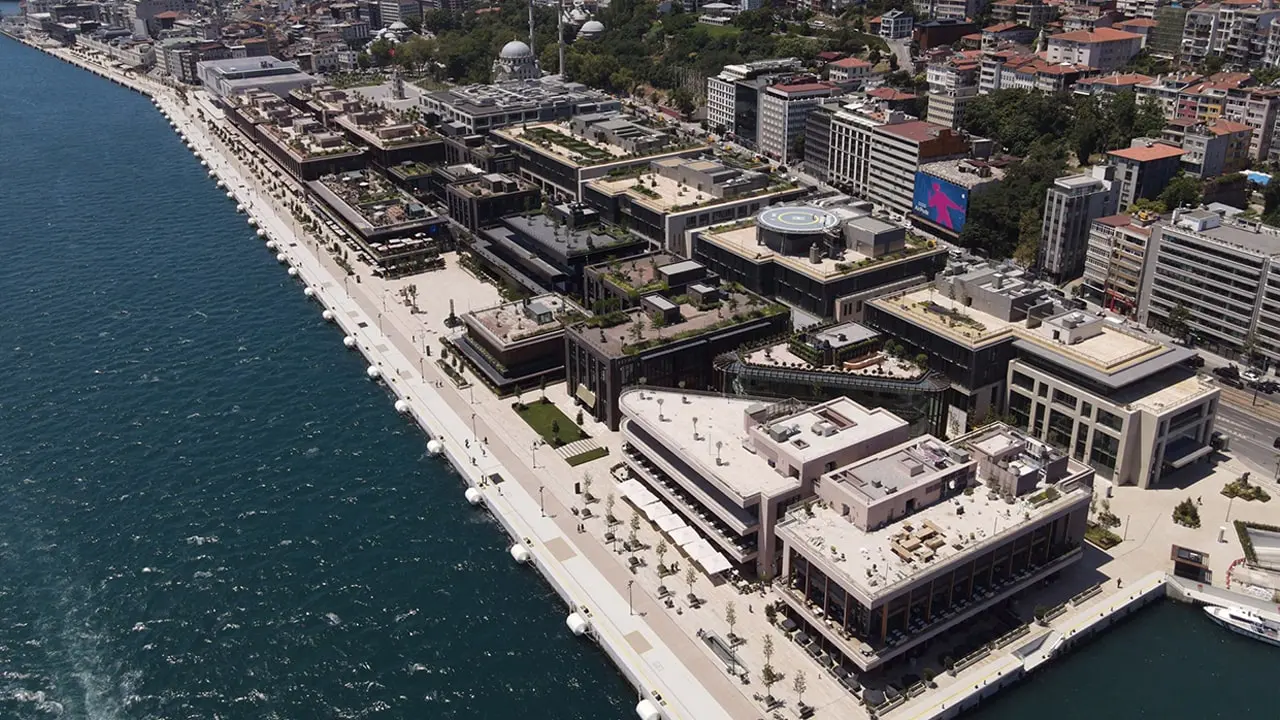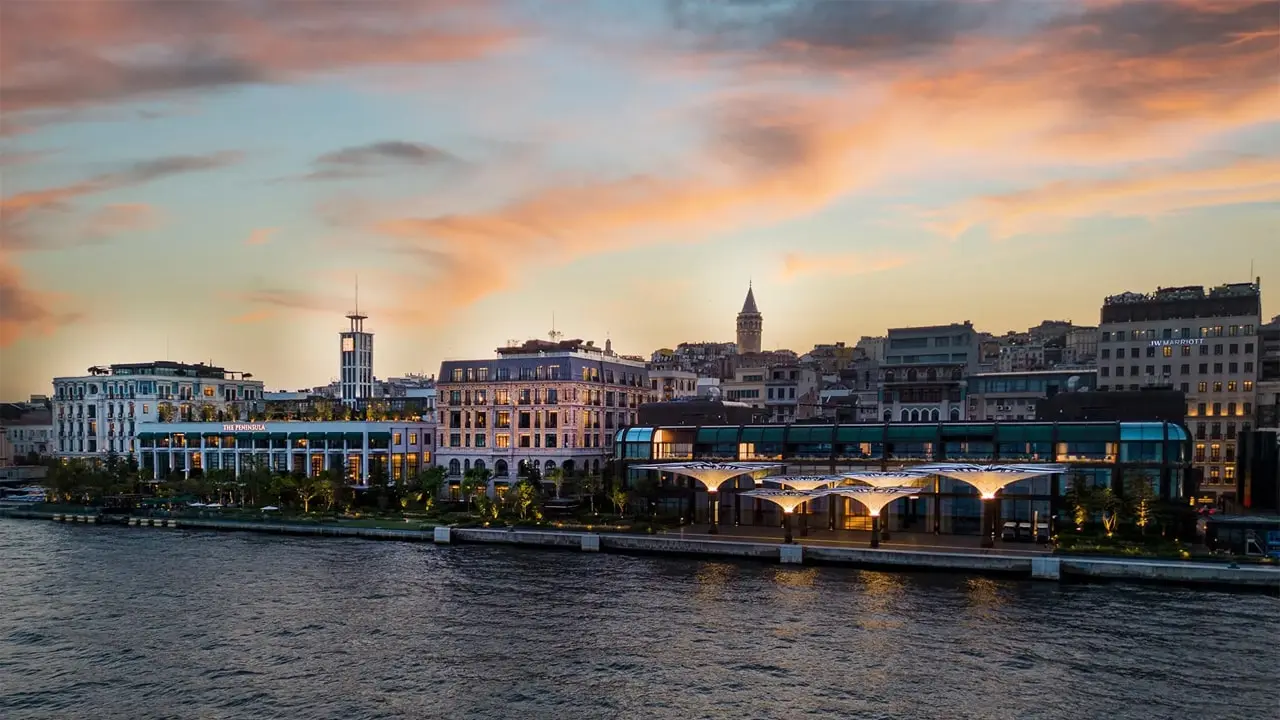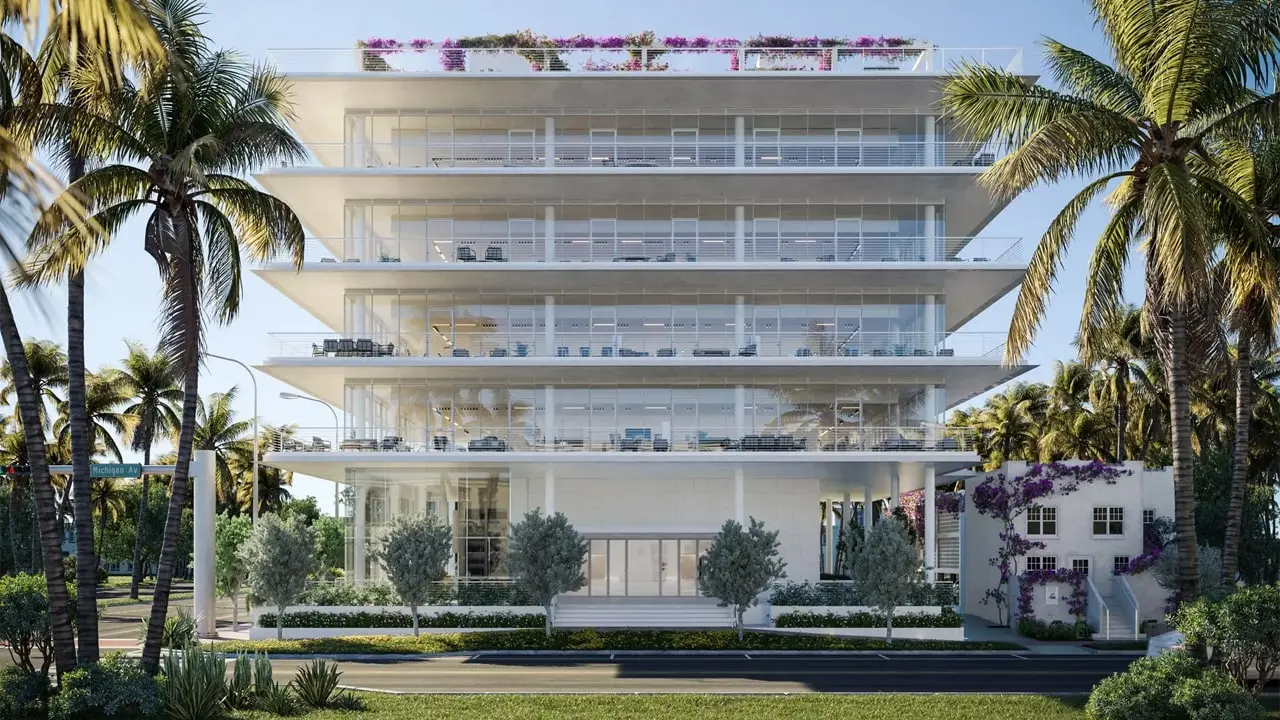May 5, 2015
Exclusive review: Soho House Istanbul
The restoration of this 19th-century palace in the city's coolest district is the London hotel group's biggest and most ambitious project to date. We find out why it's the talk of the town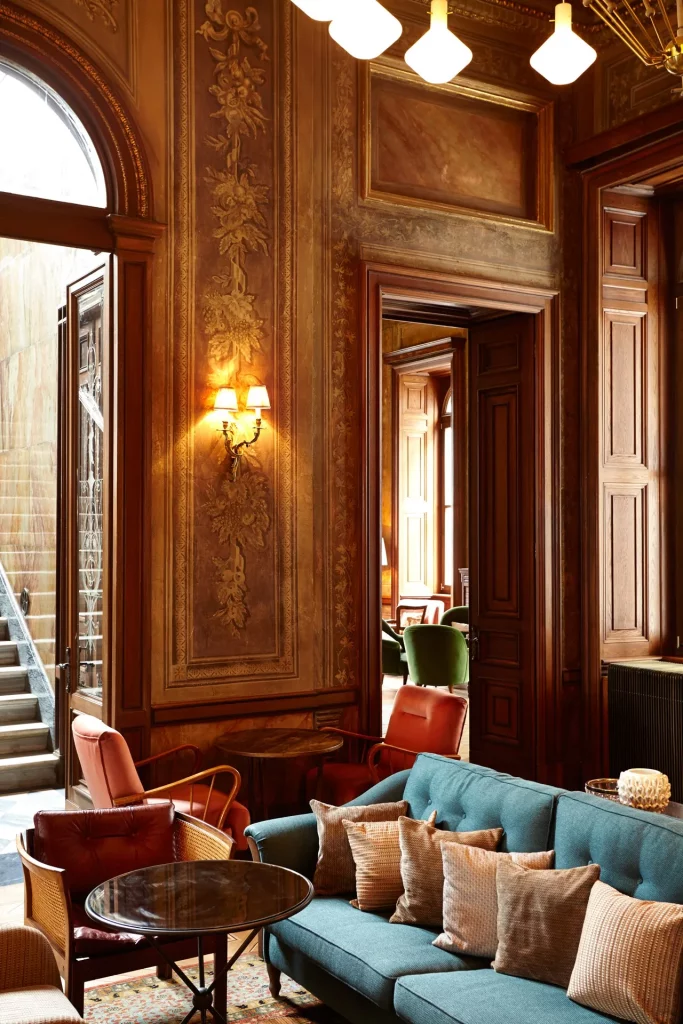
Members’ lounge, Soho House Istanbul. Photo: Tim Evan Cook
On wide İstiklal Avenue and the surrounding Beyoğlu district, Istanbul’s once thriving Italian population has left its mark on the city with ornate façades and Byzantine Catholic churches. Ian Fleming, who set some of From Russia with Love’s most memorable scenes in this area, delighted in its ‘sleazy romance’.
‘It should have been Arabian Nights,’ he wrote in 1957, ‘but to Bond, seeing it above the tops of trams and the great scars of modern advertising along the river frontage, it seemed a once beautiful theatre set that modern Turkey had thrown aside in favour of the steel and concrete flat-iron.’
With neon signs advertising Diabetic Turkish Delight and shisha pipes, you can still feel that tension between romantic mystery and brash modernity, but for me that’s part of this magnificent city’s edgy charm. Friends who work in the art world here rave about the explosion of commercial galleries and world-class museums in Galatea, Beyoğlu and nearby Tophane (areas that can easily be covered on foot), while Art International Istanbul is becoming as well-known as Frieze, Art Basel or the Armoury. Of course, the art market follows the money – property prices here are on a par with London and New York – and what could provide more evidence of a creative boom than a new Soho House hotel in Istanbul, open for just a few weeks and packed with well-heeled, plugged-in local members?
The Club rooms are in one of the area’s most beautiful Italianate buildings, Palazzo Corpi, built in 1830 as the home of a wealthy Genoese merchant; later – from 1906 to 2003 – it became the US Consulate. The high-security walls that once hid the embassy building have come down so that the imposing, neoclassical white marble façade, with its blind arches and Corinthian columns, can be seen by all, along with a new garden that connects the palazzo to two new annexes that contain the bedrooms, spa, cinema and Cecconi’s restaurant.
The palazzo is very grand, with soaring ceilings, frescos and ornate fireplaces, all wonderfully restored. Some of the vast spaces have been given playful new roles: there’s a Powder Room of epic proportions; the grand balcony under the entablature is now a huge smoking terrace (Istanbul loves to smoke); and the new bar on the second floor stretches the entire depth of the building.
The furniture takes inspiration from the building’s Italian heritage, but certainly not from the 1830s – the look is mid-century modern. The main drawing room on the first floor is dominated by two 1960s Italian chandeliers, and there are deep brown leather club chairs and brightly upholstered slipper chairs. This is the work of James Waterworth, the head of design for the Soho House group. As he points out, spectacular architecture can be ‘a blessing and a curse’. The building’s sheer scale could have been intimidating, so he’s created a series of intimate spaces in warm shades of blue, green and red to offset all that cold marble.
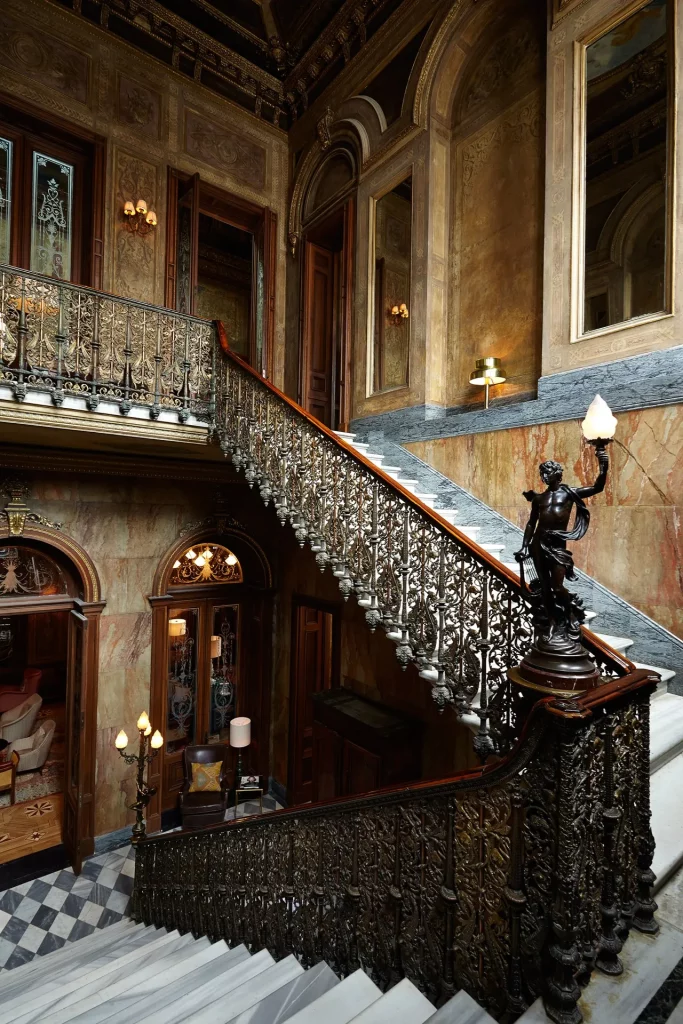
The palazzo’s main staircase, Soho House Istanbul Photo: Tim Evan Cook
Waterworth also worked on Soho Beach House which, when it opened in 2010, was controversial for rejecting South Beach’s prevailing white-on-white aesthetic in favour of something comparatively chintzy and 1920s to remind guests of the Prohibition era, when Miami was a decadent stopover en route to hedonistic Havana. That look-to-local approach can be seen here too, in the faded Turkish rugs on the floors and splashes of modern Turkish design – in particular, bright ikat cushions and throws – in the otherwise simple bedrooms. This is no Babington-on-the-Bosphorus.
The Club’s central staircase is the sort that Bond might descend slowly in a dinner jacket alongside the American ambassador; these days guests rush up and down it in trainers. The light-heartedness increases the further up you go: while the first floor has a formal candlelit restaurant (or as formal as Soho House gets) and meeting spaces, the second floor is for lounging about with laptops before drifting towards that fabulous bar, or to the outdoor terrace under white pea lights (the setting for the more casual Greek/Turkish Mandolin, another of the club’s four restaurants). And on the top floor is a yellow-and-white stripy poolside haven as well as the nightclub, Embassy, a series of small, wood-panelled rooms with very low ceilings (these would have been the embassy staff quarters). For a city renowned for its night owls this is a must: Embassy feels dark, exciting and conducive to staying up to take advantage of the late licence and visiting DJs.
In the summer, it would be perfectly feasible to spend a weekend moving from pool to bar to club to brunch and… repeat. But to do so would be to miss out on the truly bewitching local neighbourhood.
These are the shabby, vertiginous streets that Nobel Laureate author Orhan Pamuk eulogised in The Museum of Innocence, set in the 1970s, and until very recently the district had scarcely changed at all. But I notice new businesses have opened in the six months since my last visit, including Mama’s Vintage, interiors specialists and craft coffee shops (Pas, The Drip Coffee-ist, Holy Coffee). Although the Turkish barbers, café owners and bakers who always used to say hello are still here, along with the cats that Istanbul so loves.
At Soho House Istanbul, guests and members tend to be creative souls rather than the captains of industry spearheading the big-business boom elsewhere in the city with its new high-rises and malls. As such, it sits easily in its environment.
Before I stayed at this latest addition to the Soho House portfolio I was worried it might feel like a weird London transplant. But it doesn’t, not even remotely. It’s my favourite so far, and for a weekend break it’s hard to beat, allowing anyone to put down temporary roots in a corner of this vast urban sprawl that might otherwise feel too bewildering.

